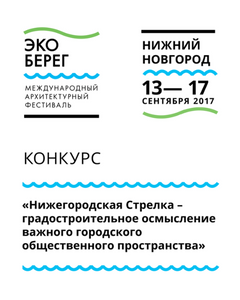The International Association of Eurasian Unions of Architects (IAUA)
Lets Speak Sustainable Construction
Lets Speak Sustainable Construction

Brussels, 11 April 2011: Today, right at the start of this year`s EU Sustainable Energy Week (EUSEW), the European Economic and Social Committee (EESC), the Architects Council of Europe (ACE) and the European Concrete Platform (ECP) launched the multilingual sustainable construction glossary.
"Sustainable methods of building design and construction have the potential to provide solutions to many of the economic, social and environmental challenges that Europe is facing today" says Staffan Nilsson, president of the EESC. "By filling the gap left by the lack of a European approach, the new glossary will be a practical instrument to boost energy savings in Europe, in line with the recently adopted EU Action Plan on Energy Efficiency." This groundbreaking project came as a response to the need for more sustainable construction and its new concepts, phrases, and terms that are increasingly being used across Europe. The glossary gathers together these terms and is a working, concise and easily accessible tool. Its purpose is to ensure a common understanding of the terminology and to disseminate this information across the EU Member States and beyond.
“The building sector has one of the largest potentials for energy savings in Europe, and that is why the development of a common language for sustainable construction is so important” stresses Dr Bernd Wolschner, president of the ECP. “However, it became clear that whilst the English version would prove extremely useful, its impact would be limited if not supplemented by the other EU languages”. The original English wiki version was launched during the 2010 EUSEW and is already being used by the construction sector, policy-makers at national and European levels and for communications, education and training. “A final achievement of our project has been the incorporation of the terms and definitions in the interactive database of terms used by the translation services of the EESC and the European Commission” states Selma Harrington, president of the ACE. “This means that our work is guaranteed a further life and, in due course, its continued use will mean that it will become better and better with agelke a good wine." This glossary is currently available in both a handy book and electronic format. Translations into the other official EU languages will be available in the autumn of this year. More information on the launch conference and the publication is available on our website: http://www.eesc.europa.eu/?i=portal.en.events-and-activities-sustainable-construction-glossary
About the partners: European Economic and Social Committee The European Economic and Social Committee (EESC) is a consultative body of the European Union. Its 344 members belong to economic, social and civic organisations in the 27 Member States. The EESC enables its members to take part in the process of formulating EU policies and decisions. Around 800 people work for the EESC and assist its members. Architects` Council of Europe The Architects` Council of Europe (ACE) is the European organisation representing the architectural profession at European level. Its growing membership consists of member organisations, which are the nationally representative regulatory and professional bodies of all European Union (EU) Member States, Accession States, Switzerland and Norway. Through them, it represents the interests of about 520,000 architects.
European Concrete Platform The European Concrete Platform ASBL (ECP) is a European association incorporated as a non-profit association under Belgian law. Its objective is to study and promote all aspects of concrete for construction. The members of the European Concrete Platform are European branch associations representing the concrete industry and the constituents thereof.
PRESS RELEASE No 42/2011 11 April 2011
Other articles



















